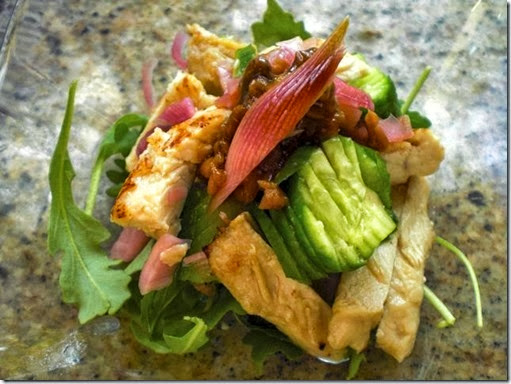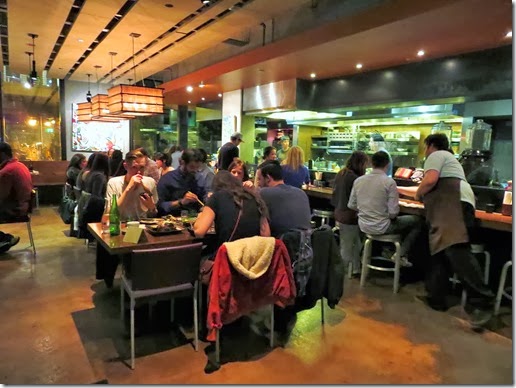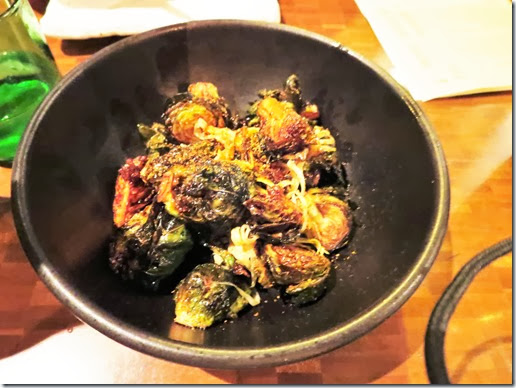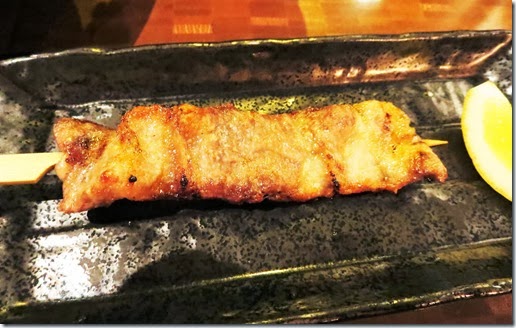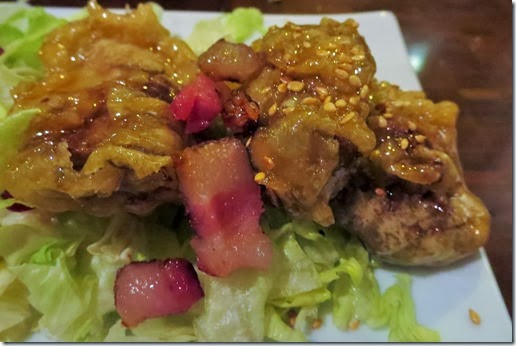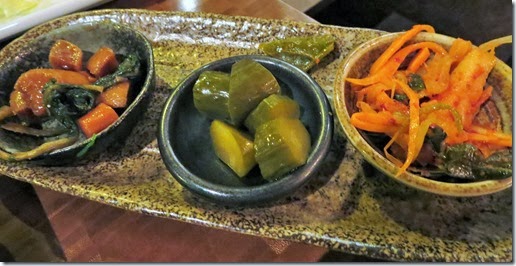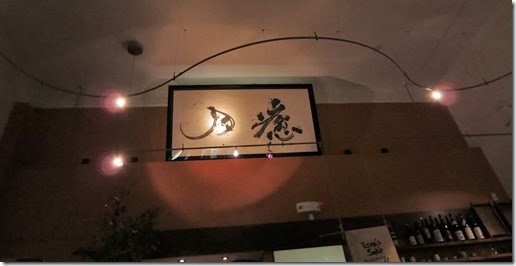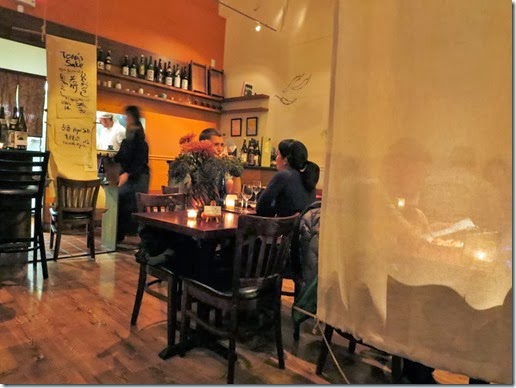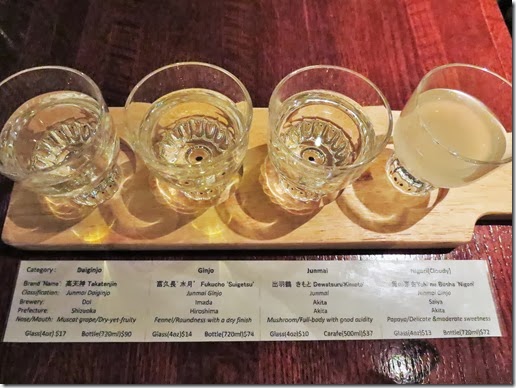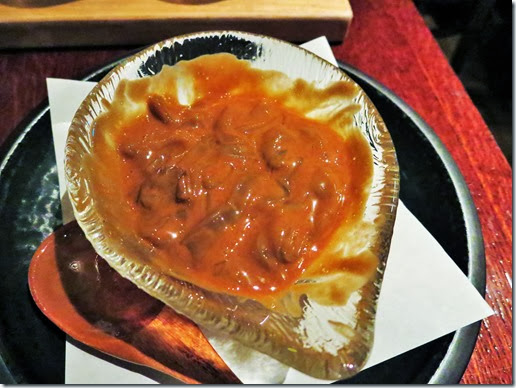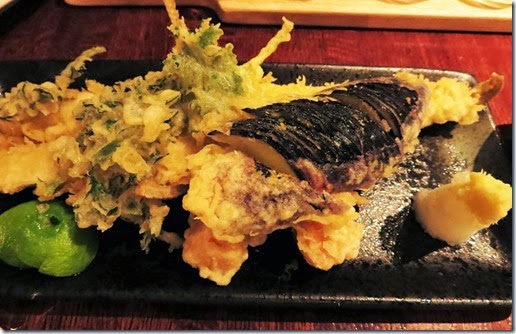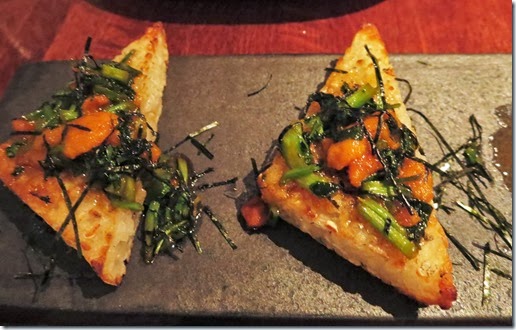I learned about this restaurant sometime ago on a previous trip to San Francisco. On that visit we stayed at the
Hotel Kabuki in
San Francisco Japan town and tried to go to this restaurant but we could not get a reservation. Instead, we went to
Ino sushi 井乃鮨. Later we learned our substitute choice was a “
Sushi bullies” place (aka sushi Nazi) which we did not know at that time but had a good dinner nonetheless. This time I planned ahead and made a reservation via email way ahead of time. This place must rely on a regular clientel or "
Jouren" 常連客 or word-of-mouth for most of their business. It is an “if you don’t know exactly where you are going you will never get there” type of place. Even with the specific instruction that it is located on the second floor of the building at the corner of Post and Buchanan* (picture below left) you will not find it. This is because prior to opening at 6pm, the front of the restaurant (picture below right) is totally hidden behind locked, nondescript, unmarked double doors with absolutely no signage. On our previous visit, even though we did not have a reservation and would be eating elsewhere, I just wanted to see where it was located. We wandered around for quite some time but never found it. This time, luckily we arrived a 6:00 PM and there was a small hand written cardboard sign with “Kappa” on it. Behind the double door we found a small vestibule and a nice black Japanese style sliding door with a lantern with “koryouri Kappa” 小料理 かっぱ on it (picture below right).
*The first floor of this building has a family style Japanese restaurant called "Sanppo" 三宝. When we lived in the Bay area many years ago, we used to stop by for a late supper after driving back from all-day skiing at Lake Tahoe.
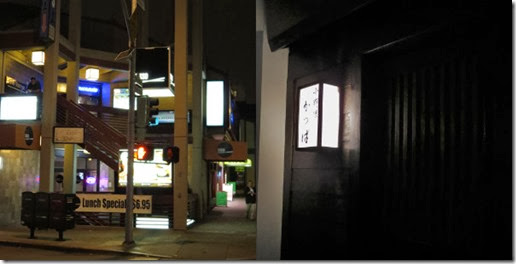
We opened the sliding door, and were welcomed by a smiling kimono-clad proprietor (wife) into a small but nice space. The restaurant's decor was dominated by a white wood counter which probably seats 10 people (picture below left) and a small separate room which seats 3 more at a table. The husband was the chef behind the counter and no other helpers were in sight. In the small triangular space behind our seats was a flower arrangement displayed (picture below right) which was a very nice touch. It was very quiet (there was only one other couple in the separate room).
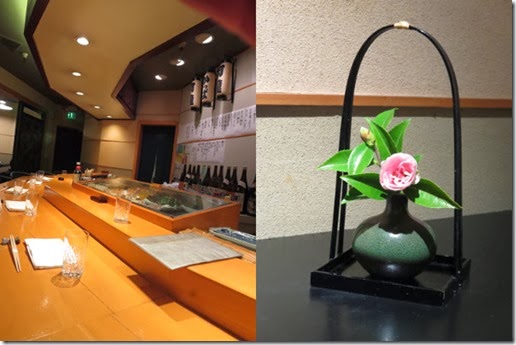
They had quite an extensive sake list. For the first round, I had Kikusui 菊水 and my wife kamotusru arabashiri 加茂鶴あらばしり. After some conversation with the couple, we found out that both were from Hokkaido like myself; the “Mrs.” was from Asahikawa 旭川and the “Mr.” from Akabira 赤平. Since we established the Hokkaido connection, I next chose Otokoyama 男山 which is brewed in Asahikawa (unfortunately this was not a particularly great sake). We also had Dassai 獺祭 and Born 梵 to accompany other dishes.

We had asked to have an omakase tasting course お任せ. So, we did not have to order. Everything just came, one after the other in a well timed fashion.
The first dish was clear soup with seared scallop and kaiware カイワレ大根 and yuzu ゆず. To me, this is a bit unusual for an opening since we usually start with sashimi at an izakaya but this is not an izakaya it was more like a small ryoutei.料亭 or traditional Japanese course only restaurant. The soup had a lot of umami (or “dashi ga kiiteiru” 出汁がきている).
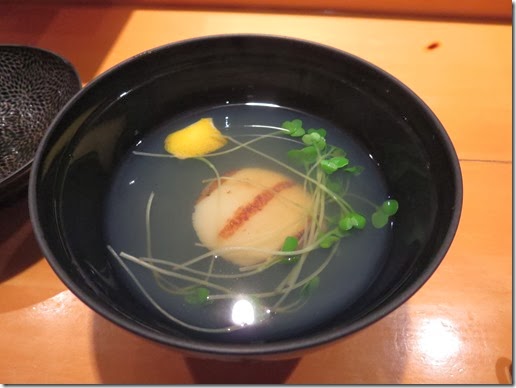
The next was crab in vinegar dressing or Kani no sunomono カニの酢の物. Good sized Dungeness crab and snow crab meat was dressed in sweet vinegar with sesame and cucumber.
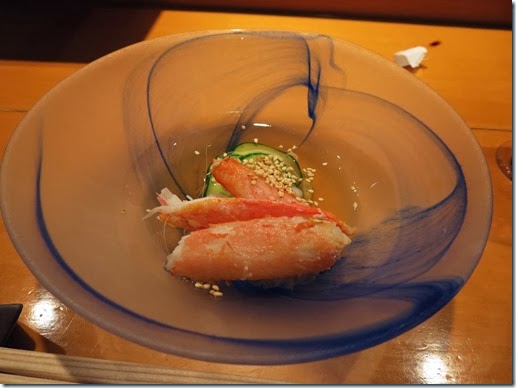
The third dish was “tuna no nuta” マグロのぬた, yubiki tuna 湯引き鮪 with blanched scallion and wakame seaweed were dressed in miso vinegar dressing..
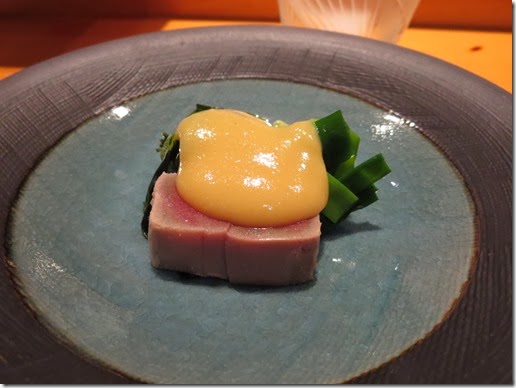
And then came the assortment of 15 (no mistake, fifteen) small dishes called “
Hassun” 八寸. Traditionally, many small items are placed in an 8-
sun square plate (“
sun” 寸 is an old Japanese measurement unit which is about 3cm, so 8-
sun is 24cm or about 10inch square). As far as I can remember, the left row from the bottom are hamachi teriyaki はまちの照り焼き, roasted duck breast 鴨胸肉のロースト, karashi-mentaiko wrapped in squid 辛子明太子のイカ巻き, dashi-maki omelet 出汁巻き. The right row from the top are corn kakiage トウモロコシのかき揚げ, fried scallop ホタテのフライ, tuna kakuni マグロの角煮, simmered gan-modoki がんもどきの煮つけ, and simmered kabocha かぼちゃの煮つけ. In the center 6 items from the left bottom are smoked salmon with mountain yam 燻製サーモンの山芋載せ (in the small dish), asparagus in sesame dressing アスパラの胡麻和え, senmai zuke of radish 千枚漬け, simmered small scallop ひも付きホタテの煮もの, boiled “Kuruma” prawn 茹でクルマエビ and eggplant with dengaku sauce 茄子の田楽. All these were presented on top of a fresh wasabi plant leaf. This was indeed our nirvana; small morsels of different tastes between sips of sake.
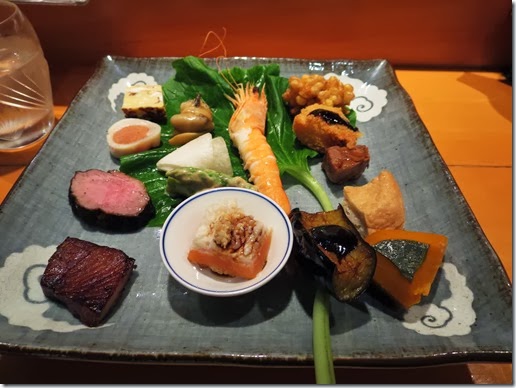
At the wife's advice, we nibbled on the stalk of fresh wasabi plant which had a nice fresh taste but was not as hot as wasabi itself. We had consumed quite a bit of sake to finish these dishes.
Now came the otsukuri お造り or sashimi 刺身. From the left to right; a nice piece of hamachi はまち, maguro 鮪, kanpachi カンパチ, and California Uni (we were told was from off the coast of Santa Barbara, and is said to be the very best and indeed it was). Everything was great but the uni was particularly great and we asked for an additional serving to go with more sake.
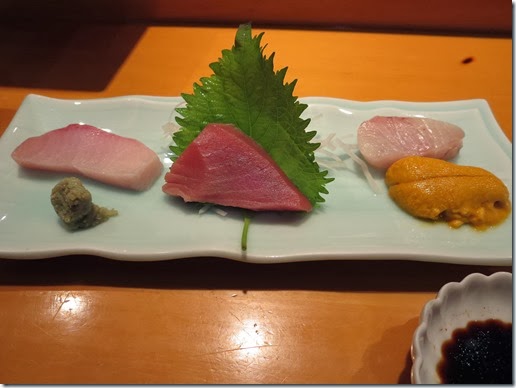
The shime 〆 course was three good pieces of nigiri にぎり; eel, smoked salmon and tuna. The rice was not as well seasoned as it could have been and the rice balls appeared to be made in a mold rather than done by hand.
At this point, we had drunk enough and were quite satiated. But here came the dessert. From left to right in the picture below; mizu-yokan水羊羹, ripe pineapple, strawberry, mango and kinako-coated warabi mochi わらび餅.
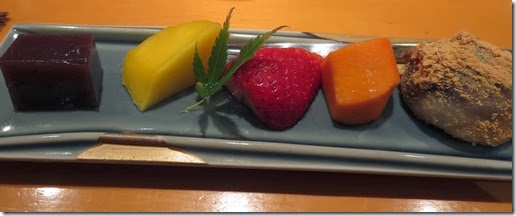
This was not the end of the desert and we also had strawberry/raspberry sorbet.

This was quite an extraordinary experience. We felt like we were back in Japan. The place was quiet and we enjoyed interesting conversations with the chef and his wife. We thoroughly enjoyed the evening.
Information on Kappa.
Restaurant Kappa 小料理かっぱ
1700 Post St., Suite K
San Francisco, CA 94115
(On the 2nd floor of the building located at the corner of Buchanan St. and Post St.)
(415) 673-6004 - Call for reservations after 4:30pm
http://www.kapparestaurant.com/english.htm






